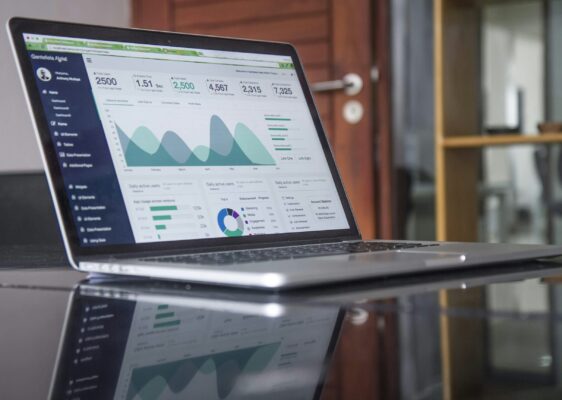The rise of artificial intelligence has changed how entrepreneurs and creators generate income. What once required hours of manual work can now be automated with intelligent tools that learn, adapt, and execute tasks with minimal human intervention. This shift represents more than just technological advancement it’s a complete reimagining of how passive income streams can be built and scaled.
The Automation Revolution in Income Generation
Traditional income generation often follows a linear model: more time invested equals more money earned. AI tools break this paradigm by creating systems that work independently, scaling your efforts without proportionally scaling your time commitment. The key lies in identifying repetitive, data-driven tasks within your income streams and replacing human labor with intelligent automation.
Modern AI tools excel at pattern recognition, content generation, customer service, marketing optimization, and financial analysis. When strategically implemented, these capabilities can transform one-time manual processes into self-sustaining revenue engines that operate 24/7 across global markets.
Content Creation and Marketing Automation
Jasper AI stands out as a comprehensive content generation platform that can produce blog posts, social media content, marketing copy, and email campaigns at scale. The tool learns your brand voice and maintains consistency across all content types, enabling creators to build content-based income streams without constant manual writing.
Copy.ai specializes in marketing copy optimization, automatically generating multiple variations of sales pages, ad copy, and email sequences. Its strength lies in A/B testing different approaches and learning which messaging converts best for specific audiences.
Surfer SEO combines AI-powered content optimization with search engine ranking analysis. It automatically identifies content gaps, suggests topics with high earning potential, and optimizes existing content for better search visibility—crucial for affiliate marketing and ad revenue streams.
For video content creators, Pictory and Lumen5 transform written content into engaging video presentations automatically. These tools can take blog posts, articles, or scripts and create professional videos complete with relevant imagery, animations, and voiceovers, opening up YouTube monetization and video marketing opportunities.
E-commerce and Sales Automation
Shopify’s AI-powered features include automated product recommendations, inventory management, and customer segmentation. The platform’s AI can predict which products will sell best, when to restock, and which customers are most likely to make repeat purchases.
BigCommerce offers similar capabilities with advanced pricing optimization. Its AI analyzes competitor pricing, demand patterns, and customer behavior to automatically adjust product prices for maximum profit margins.
Gorgias handles customer service automation for e-commerce businesses, using AI to respond to common inquiries, process returns, and even upsell customers based on their purchase history. This maintains high customer satisfaction while reducing labor costs.
For dropshipping businesses, AutoDS automates product research, listing creation, price monitoring, and order fulfillment. The tool can identify trending products, calculate optimal pricing, and even handle supplier communications automatically.
Investment and Trading Automation
Robo-advisors like Betterment and Wealthfront use AI algorithms to manage investment portfolios automatically. These platforms rebalance portfolios, harvest tax losses, and adjust asset allocation based on market conditions and individual risk tolerance.
TradingView’s AI-powered alerts can monitor thousands of stocks, cryptocurrencies, and forex pairs simultaneously, executing trades based on predefined criteria. The platform’s AI can identify technical patterns and market anomalies that human traders might miss.
Koinly automates cryptocurrency portfolio tracking and tax reporting, essential for anyone generating income through crypto trading or mining. The tool connects to exchanges and wallets automatically, categorizing transactions and calculating tax obligations.
Real Estate and Property Management
Rentals.com and similar platforms use AI to optimize rental pricing dynamically, analyzing local market conditions, seasonal demand, and property features to maximize rental income. The systems adjust prices automatically to maintain high occupancy rates while maximizing revenue.
Buildium automates property management tasks including tenant screening, rent collection, maintenance scheduling, and financial reporting. Its AI can predict which tenants are likely to renew leases and identify properties requiring preventive maintenance.
BiggerPockets’ AI tools help real estate investors identify profitable properties by analyzing market data, rental yields, and appreciation potential across different markets automatically.
Freelancing and Service Business Automation
Calendly with AI scheduling eliminates the back-and-forth of appointment booking while Acuity Scheduling goes further by automatically qualifying leads and routing them to appropriate services based on their responses to intake questions.
FreshBooks automates invoicing, expense tracking, and client communications. Its AI can predict which clients are likely to pay late and automatically send appropriate follow-up messages.
Zapier connects different business tools and automates workflows between them. For service providers, this might mean automatically creating project folders when new clients sign contracts, or sending welcome sequences when payments are received.
Affiliate Marketing and Lead Generation
ThirstyAffiliates manages affiliate links automatically, cloaking URLs, tracking clicks, and rotating links based on performance. The tool’s AI can identify which affiliate products convert best for specific audience segments.
ConvertKit uses AI to segment email subscribers automatically based on behavior, sending targeted affiliate promotions to the most likely buyers while nurturing other segments with valuable content.
OptinMonster creates and optimizes lead capture forms using AI, testing different designs, copy, and triggers to maximize conversion rates automatically.
Financial Management and Analysis
QuickBooks’ AI features categorize expenses automatically, identify tax deductions, and provide cash flow predictions. For multiple income stream management, this automation ensures accurate financial tracking without manual bookkeeping.
YNAB (You Need A Budget) uses AI to analyze spending patterns and predict future cash flow, helping optimize the allocation of resources between different income-generating activities.
Personal Capital aggregates all financial accounts and uses AI to analyze investment performance, identifying opportunities to optimize returns across different asset classes.
Implementation Strategy
Successfully automating income streams requires a systematic approach. Start by mapping your current income generation processes and identifying repetitive tasks that consume significant time. Prioritize automation opportunities based on time savings and revenue impact rather than complexity.
Begin with one income stream and gradually expand automation to others. This approach allows you to learn each tool thoroughly and troubleshoot issues without overwhelming your entire business operation. Most successful automation implementations follow a crawl-walk-run methodology.
Integration between tools becomes crucial as you scale. Choose platforms that offer robust API connections or native integrations with other business tools. This ensures data flows seamlessly between systems and reduces the manual work required to maintain your automated processes.
Measuring Success and Optimization
Effective automation requires continuous monitoring and optimization. Set up analytics dashboards that track key metrics for each automated income stream. Monitor not just revenue, but also conversion rates, customer satisfaction scores, and operational efficiency metrics.
Most AI tools provide built-in analytics, but consider aggregating data into centralized dashboards using tools like Google Data Studio or Tableau. This provides a holistic view of how automation impacts your overall business performance.
Regular optimization is essential because AI tools improve through data and feedback. Schedule monthly reviews to analyze performance data, adjust automated parameters, and identify new automation opportunities as your business evolves.
Tools that seem cutting-edge today may be standard features tomorrow, while entirely new categories of automation tools emerge regularly. Stay informed about developments in your specific industry and be prepared to adapt your automation strategy accordingly.
Consider the balance between automation and human touch. While AI can handle many tasks efficiently, maintaining personal connections with customers and staying involved in strategic decision-making remains crucial for long-term success.
Privacy and data security become increasingly important as you automate more business processes. Ensure all AI tools comply with relevant regulations and implement proper data protection measures to maintain customer trust and legal compliance.



